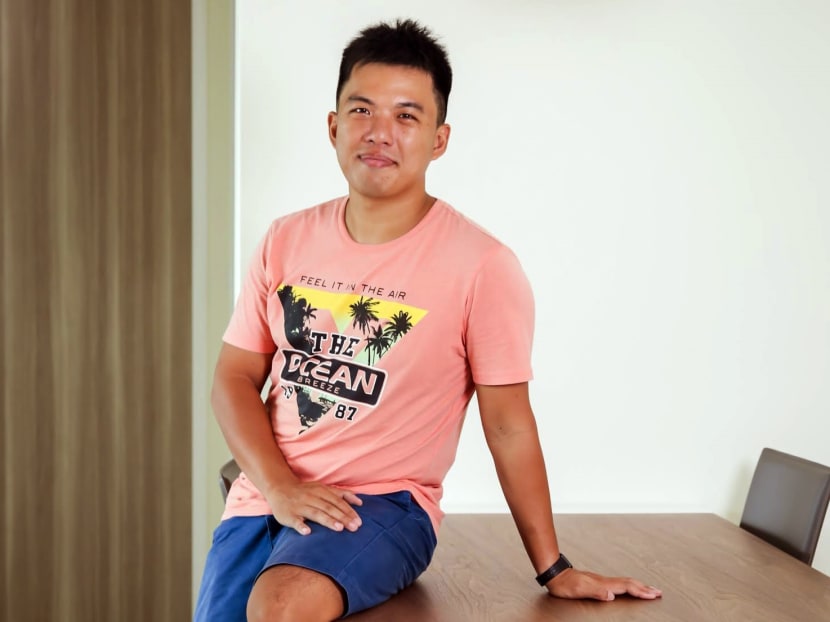CPF review panel calls for simpler long-term investment options
SINGAPORE — With the overwhelming majority of current Central Provident Fund (CPF) investors failing to earn more than the CPF interest rates — due to poor management and, partly, high fees — there should be a new avenue offering members uncomplicated financial products that encourage long-term investing, said the CPF advisory panel on Wednesday (Aug 3).

Mr Tan Wei Lun, a trainee teacher says: "I would like to grow my money and get richer. For a typical average working class person, a proper route would be through investment. I start small with my investments and can potentially retire early." Photo: Ernest Chua
SINGAPORE — With the overwhelming majority of current Central Provident Fund (CPF) investors failing to earn more than the CPF interest rates — due to poor management and, partly, high fees — there should be a new avenue offering members uncomplicated financial products that encourage long-term investing, said the CPF advisory panel on Wednesday (Aug 3).
Unveiling their proposed alternative to the CPF Investment Scheme (CPFIS) catering to less-savvy investors, dubbed Lifetime Retirement Investment Scheme (LRIS), the panel said the main feature they envision is a small number of well-diversified funds that do not require active portfolio management and charges less in fees.
CPF monies can be pooled for bulk-purchases so that fees are spread out. Besides that, members will be encouraged to invest for the long term for better returns. To that end, it could entail a minimum investment period and a limit to the number of switches an investor can make.
The proposal for the LRIS — the fourth and final recommendation of the panel — was prompted by the finding that a “significant number” of CPF members wanted to get higher returns by taking some investment risks but some find it daunting to navigate through the 200-odd financial products under the CPFIS.
In the last financial year, 84 per cent of CPF investors would have been better off leaving their savings in their Ordinary Accounts rather than investing, noted the panel. This meant they either did not make enough to match the default 2.5 per cent interest or lost money.
High investment fees, which eroded returns, were partially to blame, they added. The funds under the LRIS should also require passive management, in contrast to the CPFIS where fund managers decide on the equities to buy, hold or sell, for instance, incurring higher management fees.
Independent consultant Mercer, which was commissioned by the panel, also found that it is less burdensome for members to make investment decisions when a “life-cycle investment approach” is taken.
This is where a member’s investment portfolio is automatically adjusted to suit different stages of his or her life, such as taking on lower-risk investments when approaching retirement.
Retirement systems in the United Kingdom, the United States and Hong Kong have adopted such an approach. Many retirement plans around the world have made moves to simplify investment choices that have an automated de-risking programme, said panel member Professor Joseph Cherian from the NUS Business School.
Fundamentally, the panel found that the CPFIS was “not specifically designed to meet the needs of CPF members who wish to invest but feel they lack the financial expertise and/or time and resources to actively manage their investments”.
Under the CPFIS, members can invest their CPF savings, as long as they maintain at least S$20,000 and S$40,000 in their Ordinary and Special Accounts, respectively. The products promise potentially higher returns, but at higher risks.
Panel chairman Tan Chorh Chuan said the LRIS would help plug the gap in existing options, especially for younger CPF members who would like to invest long-term but do not have the time nor confidence to tap the CPFIS.
(Click on the image to expand)

It is also expected that there would be more members who have the potential to seek higher expected returns by taking some investment risks, the panel said.
As of the end of last year, about S$25 billion worth of CPF balances were invested. But the panel estimates that another S$100 billion could be invested.
It added that more members will also hit investment thresholds. In 2030, nine in 10 active CPF members aged 45 will have savings of more than S$40,000 in their Special Accounts, up from the current six in 10 figure.
The panel recommended that the Government form an expert investment council to advise on the set-up and implementation of the new scheme. This could include experts in the areas of finance, asset allocation, risk management, among others.
Commenting on the proposal, NUS Associate Professor Chia Ngee Choon said prospective investors participating in the LRIS must be provided with “clear and simple information on the investment strategies of the LRIS and the past investment performance of the selected fund administrator”.
“They must be given sufficient financial literacy to assess the relative risks and returns and to know their own risk appetites,” she added. While having more than one fund administrator will introduce competition, it may affect the fees, she noted.
Trainee teacher Tan Wei Lun said he lost about 40 per cent of his investment through the CPFIS eight years ago because his insurance agent did not watch the market and shift his investments accordingly.
The 30-year-old has since made a new investment under CPFIS with another financial consultant and said the new scheme would appeal to him.
“I would like to grow my money and get richer. For a typical average working-class person, a proper route would be through investment. I start small with my investments and can potentially retire early,” he added. ADDITIONAL REPORTING BY VALERIE KOH






